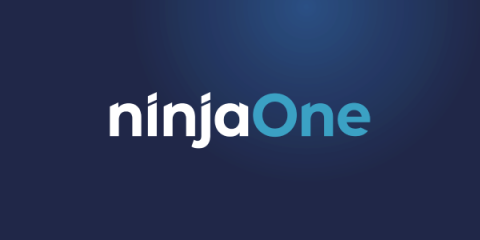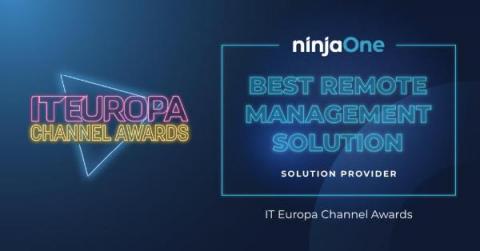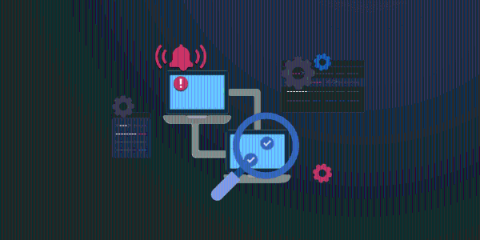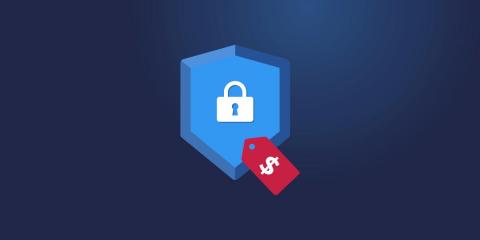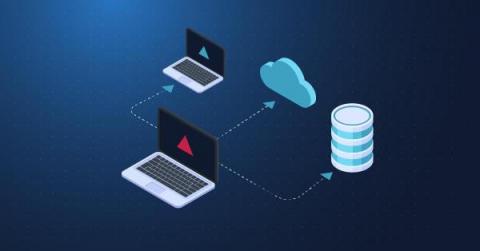Operations | Monitoring | ITSM | DevOps | Cloud
Latest Posts
Hardware Asset Management (HAM) Explained
A well-run IT team keeps track of every asset in their domain, including hardware, software, and licenses. The specific task of managing hardware assets is known as hardware asset management. This involves keeping tabs on hardware from the time it’s requested and purchased to when it’s phased out of use and disposed of. As you can imagine, this can be a daunting task when handled manually.
IT Europa Channel Awards 2022: NinjaOne Rated Best Remote Management Solution
The IT Europa Channel Awards reward excellence in European software development, and IT and telecoms solutions. The panel of judges from the MSP and IT community voted for the best solutions across 4 categories, with NinjaOne winning the Best Remote Management Solution in the Solution Provider section at the awards ceremony in London on May 19th 2022. NinjaOne collecting the Best Remote Management Solution at the IT Europa Awards.
The 6 Fundamental Steps in a Network Monitoring Process
Network monitoring is vital for operating an IT environment at optimal performance. As a result, organizations can improve operational efficiencies with a well-managed network while proactively maintaining a secure network. While remote work has made the network monitoring process more challenging, new cloud-based tools have extended IT teams' reach into home and remote offices to ensure employees are secure and productive.
What is Endpoint Management? Remotely Secure Your Organization's Devices
Each device's overall health and security affect the overall organization, and if an endpoint is not in good health, it could be a significant security risk. For example, the IDC discovered that endpoints such as laptops, desktops, or mobile devices are the origin of 70% of successful breaches. Because those endpoints often serve as a gateway for a security breach, robust endpoint management is essential for today’s modern organizations.
4 Key Steps of a Vulnerability Management Process
Vulnerabilities within an IT environment pose a big security risk and are a threat to digital data within an organization. These vulnerabilities can be exploited by others, or a lack of necessary precautions can result in damaged or lost organizational data. Therefore, it is essential to have a vulnerability management process in place for these reasons.
NinjaOne Partnership with SaaS Alerts Provides Enhanced Security
Managed Service Providers (MSPs) are charged with protecting their customers from all of the threat vectors that target devices, networks, and applications. The diligence required to provide this level of protection for customers is unending. However, if an MSP is going to properly secure their customers’ environments, they first must secure their own, which is why NinjaOne has collaborated with the cybersecurity company SaaS Alerts to better protect MSPs from RMM supply chain attacks.
5 Best Help Desk + Asset Management Software Solutions [2022]
With a constant stream of new technology and customer questions, it can be challenging to manage it all while keeping up with all the necessary tasks to ensure things are running smoothly. For example, help desk asset management software was designed to help with providing IT support services to customers while also managing company assets.
4 Tips for Creating a Successful Backup Strategy
Businesses of all sizes lose an average of $4,500 for every minute of downtime they experience, and often that downtime is a result of data loss. Data loss can occur for a multitude of reasons, such as theft, natural disasters, software corruption, or human error. In addition, you can combat the adverse effects of data loss by creating a backup strategy.
Recipe for Great In-Person Events: 5 Key DO's and DON'Ts
For the last couple of years, most of us have been working from spare rooms, bar stools at our kitchen islands, the couch, and even garages retrofitted into home offices. The pandemic has changed the world of work forever. It has also dramatically changed the world of networking and events. Since March of 2020, we’ve seen networking move to virtual spaces in the following forms: Many have spent a significant amount of time and energy building up their digital presence in the last two years.


